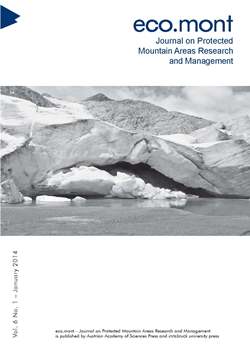
Eco.mont Vol. 6 Nr. 1, pp. 5-14, 2014/01/28
Journal on Protected Mountain Areas Research and Management

By means of a long-term monitoring project, species diversity and abundance were analysed at 16 sites along an altitudinal gradient from 1 960 m to 2 830 m in Gurgler Kamm Biosphere Reserve (LTER site of the platform Tyrolean Alps; Obergurgl, Ötztal). A total of 108 permanent plots of 1 m² were established. The main aim was to observe effects of time in untreated sites and impacts of grazing exclusion on species number and frequency of functional groups in different subalpine and alpine plant communities. Grazing exclusion led to decreases in species numbers. Significant positive grazing effects were detected for dwarf shrubs and legumes in the subalpine zone and for herbs in the upper alpine zone. Within the untreated sites, species numbers and frequencies changed significantly with time, involving almost all functional groups. The lichen heath was the most stable community. Here, only graminoids showed an increasing trend. All in all, the intermediate disturbance hypothesis was found to be valid also for high altitudes. A continuation of the traditional grazing regime is therefore suggested for the entire Gurgler Kamm Biosphere Reserve.